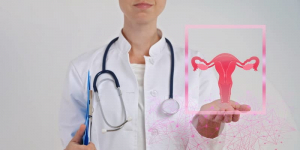Pelvic congestion syndrome is a condition that causes chronic pelvic pain and is associated with functional changes in the veins in the pelvis or lower abdomen. Veins are the blood vessels responsible for returning blood to the heart. In some women, the veins in the lower abdomen may stop functioning properly , causing a progressive buildup of blood that eventually leads to enlarged veins in the pelvic area. These veins tend to change shape, much like varicose veins in the legs (or the veins in the scrotum in a male varicocele ).
What are the reasons for female varicocele?
Numerous factors contribute to the development of pelvic venous congestion syndrome. Women who have had multiple pregnancies are more susceptible to this syndrome, especially as menopause approaches. The enlargement of the veins caused by pregnancy can create conditions for venous congestion. The enlargement and anatomical changes of the pelvic structures during the nine months of pregnancy can also cause intermittent venous obstruction.
Blood stagnation in these dilated venous structures can lead to thrombosis, massive impact on neighboring structures, especially nerves, which together contribute to the occurrence of pain. It is possible that estrogen hormones play an active role in the occurrence of the problem.
Unlike men, in whom venous blood stagnation causes an increase in temperature and a change in fertility, there is no such dependence in women, in other words, female varicocele does not affect fertility .
How does female varicocele manifest itself?
This syndrome was originally described in 1949 by Taylor in a patient who presented with persistent pelvic pain lasting more than 6 months, worsening during menstruation, accompanied by dyspareunia , dysmenorrhea and varicose veins of the lower extremities.
The pain syndrome increases during the day and with physical exertion or prolonged standing, as well as with certain changes in posture. Varicose veins of the pelvis are more common in adult women, especially those who have had several pregnancies, and, to a lesser extent, in young women who have not given birth.
How is female varicocele diagnosed and treated?
Due to transvaginal ultrasound and a better understanding of the relationship between pelvic congestion syndrome and abnormal varicose veins of the lower extremities, there has been an increase in the number of cases of varicoceles diagnosed in women.
Today, therapeutic strategies for female varicocele have not been fully developed. Conservative therapy is symptomatic . It is necessary to normalize rest and work conditions, exclude heavy physical exertion and prolonged standing.
Patients should adjust their diet, enrich their diet with fruits, vegetables, vegetable oils, and give up smoking and alcohol. Contrast showers of the perineum and physical exercises while lying down ("birch", "scissors", "bicycle") are recommended. Breathing exercises can also improve the evacuation of venous blood from the vascular plexuses of the small pelvis. It is also necessary to wear special compression tights that improve the outflow of blood from the venous plexuses of the buttocks, perineum and leg veins. Conservative correction of the syndrome for two to three months helps to significantly reduce pain and reduce the severity of varicose veins.
Clinical manifestations of the disease are reduced by using non-specific anti-inflammatory drugs and venoactive agents. The option of choice is surgical intervention, as an additional treatment is used plastic surgery of the uterine ligament apparatus.



















